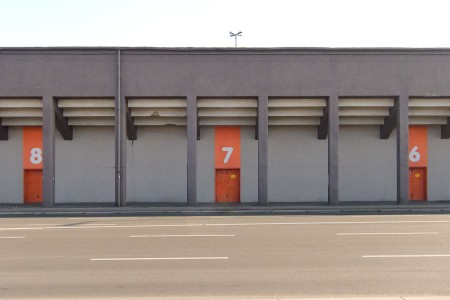
Have you ever been driving on highway A115 near the Messe and suddenly noticed a deserted building which resembles a grandstand? Well, in fact it actually is an old grandstand and the road you are driving on used to be the fastest race track in the world: the Automobil Verkehrs- und Übungsstraße, better known as the AVUS. Before World War II, racing cars speeded up to 400km/h on this 19km long track, consisting of two long, almost straights, and two hairpin turns at the ends. As a consequence it was also famous for its many severe and sometimes deadly accidents.
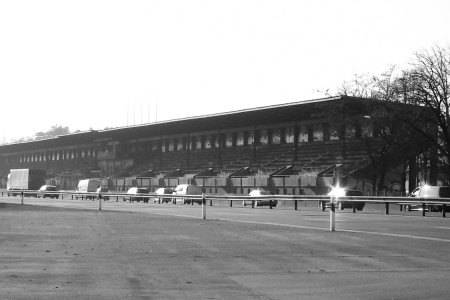
History of AVUS
Early 1900 the use of personal cars grew steadily amongst the wealthy population. As the city of Berlin was much too crowded for a fast and sporty ride, a race track outside the city was developed. Situated in the Grünewald forest along the railway track towards Potsdam. The construction started in 1913, but due to the lack of money after World War I, the first highway in Europe was not finished until 1921. Next to car and motorcycle races, the AVUS was open for private traffic as well. A single ride costed 10 Reichsmark, a three-months ticket 1000 Reichsmark.
In 1926 the first Grand Prix of Germany took place at the AVUS. Despite severe accidents, the races at the AVUS were a succes. Races became faster and faster. Nevertheless the Nazi regime wanted to show the world the fabulous German technique and demanded higher speeds. As the track had its limits for high-speed racing, a perilous 43-degrees-steep bank was build at the north curve. This was the steepest curve ever made and made AVUS the fastest race track in the world. During the consctruction of this curve the AVUS also got its wooden grandstand and the race control tower at the finish. In this period the 1936 Olympic games took place in Berlin and the track was used for cycling and the marathon.
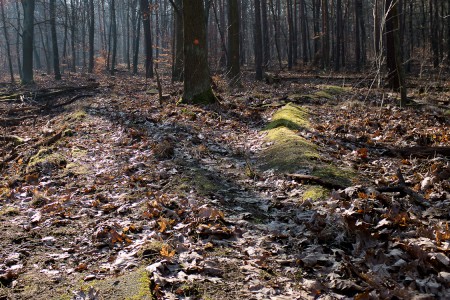
Near the Schlachtensee, at the north side of the AVUS, a new steep banked South curve, comparable to the new North curve, was planned. For this curve a model (scale 1:100) was first built next to its predestined location in the Grünewald. You can still find this concrete mini track in the woods, partly destroyed and overgrown by moss. The real South curve was never finished. Although the forest had been cleared and piles of sand marked the outline of the curve, the construction work was interrupted by Word War II.
In 1937 the German racer Bernd Rosemeyer was the first to reach 400km/h on the AVUS track. The glory did not last long, as the German hero died after a crash during a world speed record attemp on a track near Frankfurt in 1938. Discussions about the dangerous AVUS track and the subsequent outbreak of World War II stopped racing at AVUS.
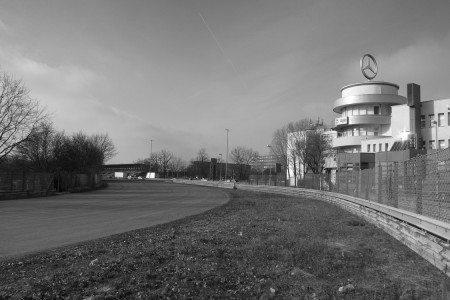
After WWII the AVUS track was restored and was shortened from 19 to 8km to reduce maintenance costs. Instead of the planned steep banked South curve, a simple turnaround was built near the Hüttenweg. The US allied forces found in the cleared grounds in the forest an ideal spot for a shooting range, the Keerans range. However, the flying bullets were not completely without danger for the sunbathing guests at the nearby Strandbad Wannsee. Ever since the cold war was ended, the US militaries left and nature has taken over. You can still see the open space in the wood and climb onto the piles of sands which marked the curve.
Successful racing took place at AVUS again since 1951. The track was located in West Berlin and therefore also used as a politcal symbol of freedom. The prestigious first race was won by a driver from the GDR. In 1959 the AVUS hosted its only Formule 1 world championship race, the German Grand Prix. The British Tony Brooks won in a Ferrari, but the victory was overshadowed by a deadly accident during the supporting programme.
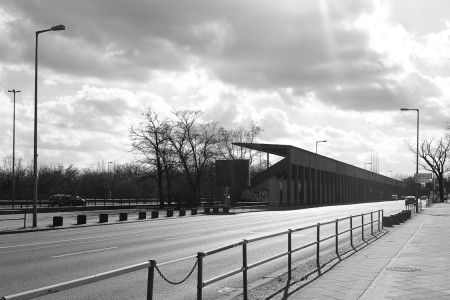
When the wall was built the succes of AVUS declined. The fastest cars did not find their way to the isolated city anymore. In 1967 the steep perilous North curve was dismantled and the curve was made flat again.
In the 70s the AVUS was connected to the city’s highway network which turned it into a normal highway, including the long traffic jam behind the Dreilinden border crossing. In the opposite direction people entering Berlin via Dreilinden could finally speed up towards the Funkturm, after driving for a long time on the GDR highways with speeds limited to 100km/h.
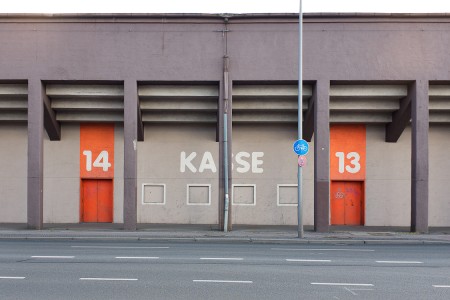
During the 80s the amount of races at AVUS was highly limited because of environmental reasons and for normal traffic the maximum speed was limited to 100km/h, measures which were opposed to the idea of freedom. The track was made somewhat shorter again and some DTM and Formula 3 races took place. Michael Schumacher took part in three of them. Even with the flat curves, severe accidents happened and the races were still too dangerous.
Since 1998 racing on the AVUS has been history. The speed limit is 100km/h.
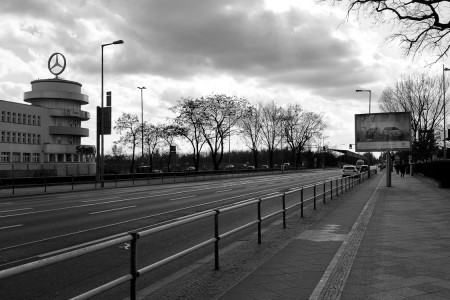
AVUS remnants
Today there are some spots that reminds of the glorious racing history at the AVUS.
The straight highway A115 is an important road to enter the city by car. The track between Spanische Allee and cityring A100 near the Messe used to be AVUS. Once a year you can drive on the AVUS by bike during the ADFC Fahrradsternfahrt (2015: June 14th).
Around the North curve you find the following:
- Wooden grandstand at the finish
- Flattened North curve
- The old race control tower with its remarkable Mercedes sign on its roof, nowadays Motel and Restaurant Avus.
- Motorcylists statue, Messedamm
By car easily reached via the highways A100 and A115
Public transport S5 Messe Süd, Messedamm, and via tunnel under the Messedamm towards the inner North curve and Motel Avus
Around the South curve you find the following:
- Cafe Restaurant Spinner Brücke, which is The meeting point for motorcyclists. There is an AVUS monument in the garden.
- Sandy banked South curve and the cleared forest of the former Keerans shooting range. Located along the Kronprinzessinenweg, at about 2km from the Spinner Brücke on the left.
- Model of the South curve, in the forest between the crossing Kronprinzessinenweg / Havelchaussee and the sandy banked South curve. From this crossing, walk about 150m further along the Kronprinzessinenweg towards a walking track on your left, turn left and walk about 50m along this walking track. The model track is on your left at about another 50m into the wood, near a remarkable standing old broken oak.
By car easily reached via highway A115, exit Spanische Allee.
Public transport S1 S7 Nikolassee
I really like this article I grow up in Berlin and was proud to have had a racetrack like the AVUS
Thank you Hand!